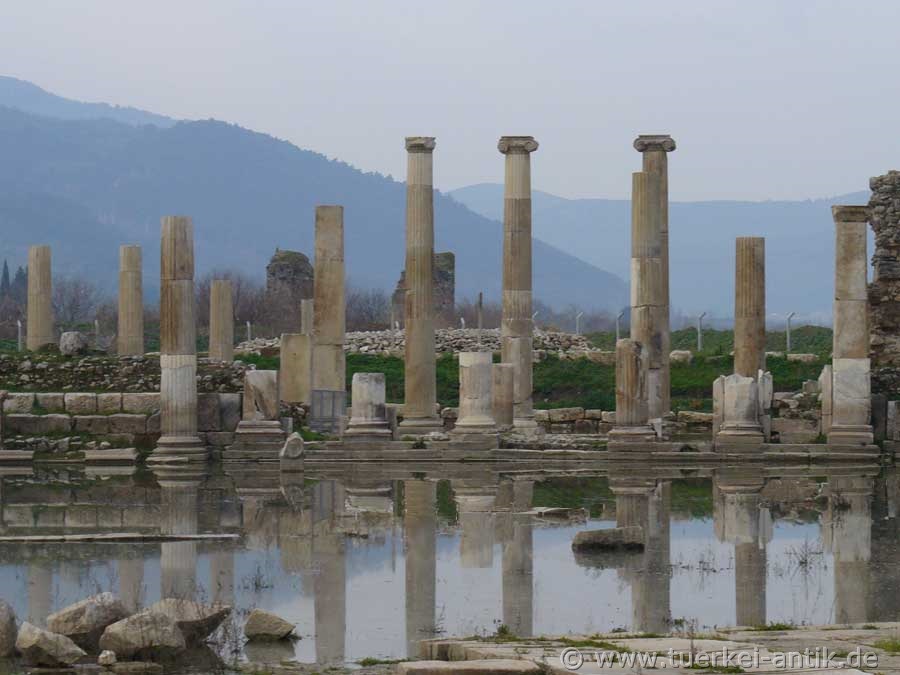 |
| The history of Magnesia ad Maeandrum |
 |
|
|
|
||
 |
|
|
|
According to legend, the town of Magnesia was founded a generation before the Trojan War by magnets from Thessaly. By Alexander the Great magnesia became Macedonian, fell to various Diadochi, became selective and experienced its cultural heyday with the kingdom of Pergamum in the 2nd century BC. Magnesia is mentioned in the works of Herodotus, Diodorus Siculus and Pausanias, among others. A war with Miletus was ended in 196 B.C. by a peace treaty, after 190 B.C. the city was liberated by the Romans.
In 133 B.C. magnesia was bequeathed to the Roman Empire. Destroyed by an earthquake in 17 A.D., the city was rebuilt by the Roman Emperor Tiberius within twelve years from his own means.
In the course of the large excavation campaigns in Asia Minor by French, German and British scientists, magnesia was also rediscovered. In the years 1891-1893, excavations were carried out by the Berlin museums under the direction of Carl Humann, during which the remains of the Temple of Zeus and the Temple of Artemis of Hermogenes were uncovered. After the completion of the first excavation campaign in 1893, the excavations were suspended until 1984. |
||
| Photo: @chim | ||
|
Translation aid: www.DeepL.com/Translator |
||
| Source: Wikipedia and others |
|
|
